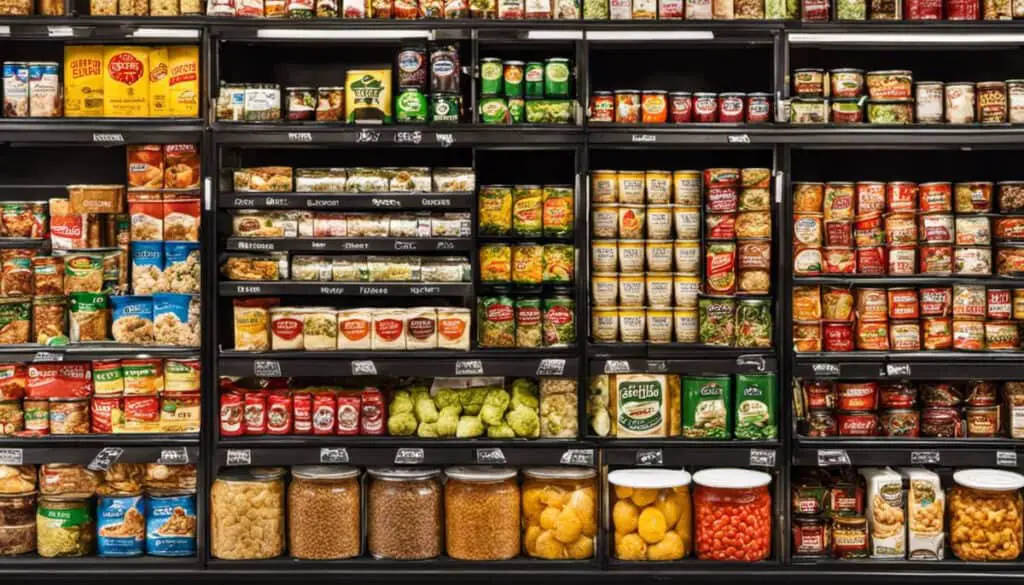

Frequently, we find ourselves assuming that most foods require refrigeration to remain fresh and safe for consumption. However, the reality is that many foods – ranging from everyday items to more exotic goods – do not need to be refrigerated, all thanks to various food preservation techniques. Delving into the science behind food preservation, we understand why some foods maintain their quality at room temperature.
Several non-perishable foods that don’t require refrigeration. Examples include dried fruits, canned goods, grains, nuts, and vacuum-sealed snacks. Proper storage ensures their extended shelf life.
We will journey through time, witnessing diverse food conservation methods that cultures worldwide have developed and implemented. Our exploration won’t stop with the familiar shelf-stable foods we associate with cans and pantry staples but also extends to truly intriguing, non-perishable, global food items. Let’s embark on this enlightening journey together, demystifying the foods that don’t require refrigeration.

Understanding Food Preservation Methods
Food Preservation: Fundamental Science And History
Food preservation refers to the various techniques employed to prevent food from spoiling. The basic principle behind these methods is to create an environment unfavorable for the growth of bacteria, yeast, and molds responsible for food spoilage. These microbes require specific conditions in temperature, moisture, and pH levels to grow. Hence, limiting one or more of these conditions can inhibit microbial growth and preserve food. Techniques like refrigeration, drying, salting, pickling, canning, and fermentation all work on this principle.
Historically, indigenous cultures worldwide have developed these food preservation methods over centuries of experimentation. Native Americans used drying and smoking techniques to preserve meat and fish, while ancient Egyptians and Romans used brines, honey, or plant-derived oils to preserve fruits and vegetables. With advancements in science and technology, more sophisticated methods, such as pasteurization, irradiation, and modified atmosphere packaging, have also emerged.
Why Some Foods Require Refrigeration While Others Do Not
Refrigeration lowers the temperature to slow down microbial growth, prolonging the shelf life of many perishable food items. Foods with moisture content or more exposed to environmental microbes, such as fresh fruits, vegetables, dairy products, meats, and cooked leftovers, need refrigeration to prevent spoilage.
Conversely, some foods do not require refrigeration due to their inherent properties or specific processing methods that make them inhospitable for microbial growth. These include processed foods like canned goods and certain types of pickled foods. The high acid or salt content acts as a preservative, inhibiting bacterial growth.
Foods That Do Not Require Refrigeration And Their Preservation Methods
Dried goods such as pasta, rice, and cereals are foods that do not need refrigeration. The drying process removes water, one of the essential elements for bacterial growth. Likewise, canned and jarred foods employ high heat to kill bacteria and seal to prevent further contamination. Many nuts, spices, and oils also have low moisture content and natural antibacterial properties that help minimize the risk of spoilage and, therefore, do not require refrigeration.
Fermented foods like sauerkraut, kimchi, and certain types of cheese create an acidic environment unfavorable to many bacteria. Smoked and cured meats are another category of food that largely, does not require refrigeration due to the dehydrating effects of smoking and the preservative role of salts and nitrates in curing.
As consumers, it’s necessary to comprehend the principles of food preservation for reliably and safely storing food. This not only helps reduce waste but also ensures the safety of your food. However, it’s essential to respect and follow the best-by dates and storage instructions present on the labels of the products. These are specific to each food item and offer the most precise information about their safe storage.


Common Shelf Stable Foods
Precise Storage For Grains And Pasta: Stability And Energy Release
Unrefrigerated food storage often includes a lot of grains and pasta. Items like rice, oats, flour, tortillas, and all types of pasta fall under this category. Recognized for their high carbohydrate content, they are an excellent energy source for our bodies. They are usually packed in moisture-free packaging to keep them dry, lasting longer when unopened. However, once the packaging is opened, resealing it correctly is essential to prevent moisture intrusion and avoid potential spoilage.
Canned Goods: Nutrient Rich And Long Lasting
Canned goods are a staple in many households due to their long shelf-life and convenience. The canning process involves heating food items to kill bacteria and seal the lid, creating a vacuum. This process prevents microorganisms from entering and spoiling the food. Common canned goods include vegetables, fruits, beans, fish, and meats. It’s important to know that while canned goods don’t require refrigeration, they should be stored in a cool, dark place to prevent food spoiling. Once the can is opened, the food should be eaten within a few days, and any leftovers should be stored in the refrigerator.
Pickles And Jams: Preservation Through Fermentation And Sugar
The production of pickles and jams involves preservation techniques that enhance shelf life. Pickling is a method of preserving food using an acidic medium, typically vinegar. This process extends the shelf life of food and imparts a distinct taste. Similarly, jams are made by boiling fruit with sugar, which preserves the fruit and prevents it from spoiling. Both pickles and jams do not require refrigeration until they are opened. Once opened, they should be stored in the refrigerator to maintain quality and prevent spoilage.
Dry Fruits And Nuts: Nutritious And Portable
Dried fruits and nuts are popular shelf-stable foods that provide numerous nutritional benefits. Drying the fruits eliminates the water content, reducing the risk of microbial growth and spoilage. Nuts are naturally shelf-stable because of their low water and high oil content. Packaged and sealed properly, these can stay good for months or even years without refrigeration.
Packaged And Dehydrated Foods: Convenient And Travel Friendly
Packaged meals like ramen noodles, macaroni and cheese, and dehydrated soups are shelf-stable due to their low moisture content, a factor that inhibits the growth of bacteria. Similarly, dehydrated foods like jerky, dried vegetables, and freeze-dried fruits are popular for their longevity and convenience. These food items are especially useful for camping or traveling, as they don’t require any special storage conditions.
Becoming well-informed about shelf-stable foods can significantly enhance your meal planning and pantry organization efforts. Reading labels for specific storage instructions and closely monitoring ‘best before’ dates is a key step in ensuring the safety and quality of the food you consume.
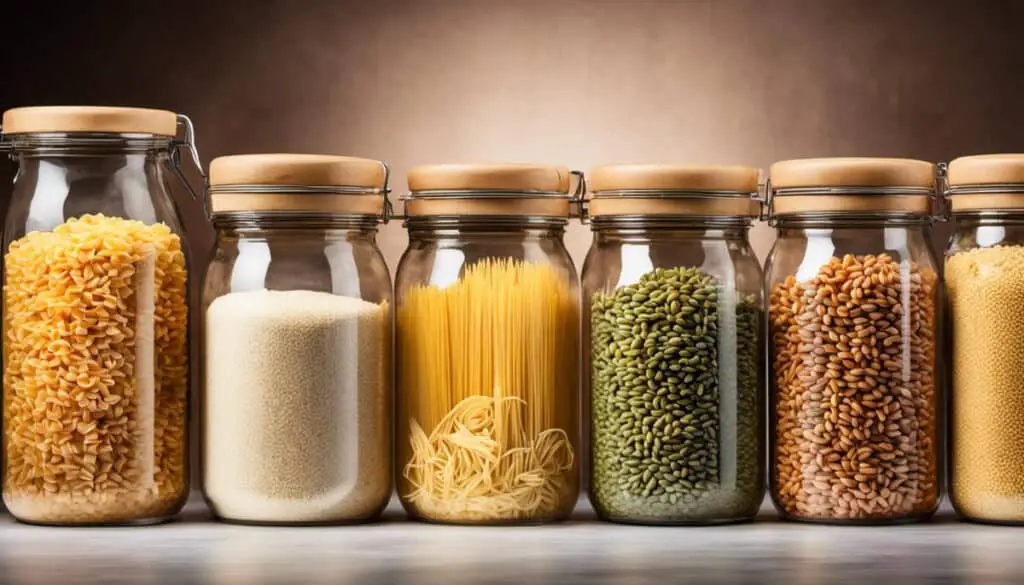

Exotic Non-Perishable Foods
Unrefrigerated Cheese: Hard And Dry Varieties
There are some surprisingly non-perishable foods you might not expect, such as certain types of cheese. Varieties like Parmigiano-Reggiano, Gouda, and Manchego, which are hard and dry, can be safely stored in cool, dark places without refrigeration. Their lengthy aging process results in a low moisture content, limiting the potential for bacterial growth. These versatile cheeses bring rich flavor to many dishes, ranging from pasta and salads to cheese boards and more.
Taste Of The Sea: Canned Seafood
Another less common non-perishable food category is canned seafood. This includes varieties like smoked oysters, sardines, and tuna. Canned seafood, although often overlooked, offers valuable sources of protein and omega-3 fatty acids. Some seafood types are even packed in olive oil, increasing their nutritional content. These proteins can be added to pasta and salads or eaten straight from the can.
Cured Meats: Salting, Smoking, And Drying
Cured meats like salami, prosciutto, jerky, and chorizo do not require refrigeration, thanks to traditional preservation techniques such as salting, smoking, and drying. These processes preserve the meats and enhance their flavors, making them a favorite addition to tapas, antipasto platters, sandwiches, and pizzas.
Global Pantry: Asian Preserved Foods
Asian cuisine also offers a variety of preserved foods that require no refrigeration. Items like pickled ginger, kimchi, miso paste, dried seaweed, and soy sauce are all at room temperature. Each supplies unique and robust flavors, adding depth to many Asian and fusion dishes.
Sweet Treats: Dried And Candied Fruits
On the sweeter side, dried and candied fruits like figs, apricots, pineapple, and coconut do not need refrigeration. These fruits undergo dehydration or are coated in sugar syrup, which prevents spoilage. They make delicious and healthy snacks independently or can give sweet and tart flavors to baked goods, oatmeal, and salads.
Fermented Goodness: Sauerkraut, Pickles, And More
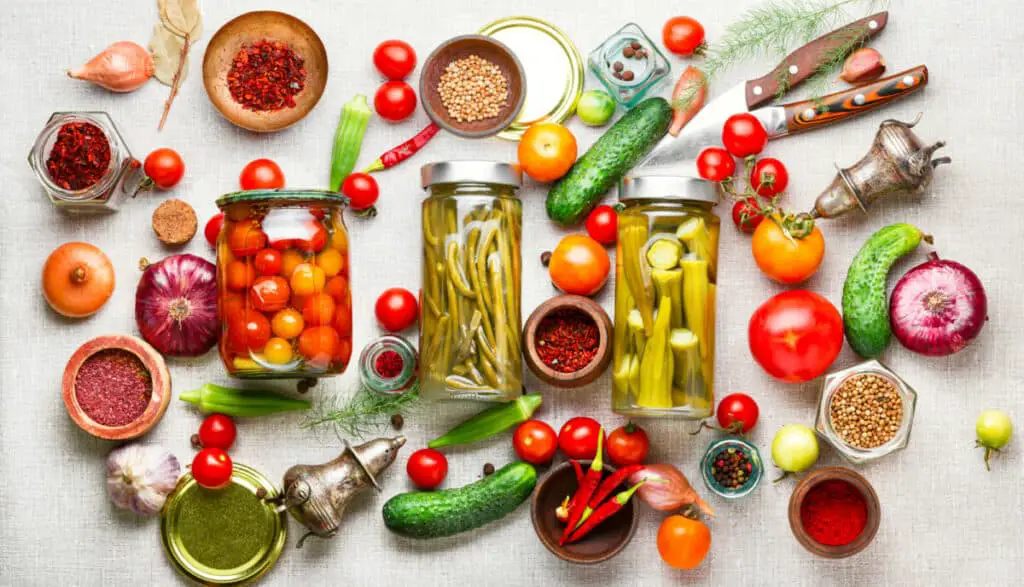
Fermented foods like sauerkraut, pickles, and other pickled vegetables can be stored at room temperature before opening. They contain beneficial bacteria that fend off harmful microbes that cause food to spoil while also boosting the digestive system. These products can add a tangy flavor to hot dogs, sandwiches, and salads.
A Bean Bonanza: Legumes And Pulses

Legumes such as lentils and chickpeas, along with other pulses like dried beans or split peas, are pantry staples around the world for a good reason. They are versatile in their usage, high in protein and fiber, and can be safely stocked in the pantry for years without spoiling or losing nutritional value.
Previous notions about the range of food options that don’t require refrigeration are quite limited. There exists an array of less traditional non-perishable food items that offer the convenience of extended storage without any compromise on taste or nutritional value.


Proper Food Storage Practices
Grasping The Importance Of Correct Food Storage
A good understanding of proper storage techniques for these non-perishable, non-refrigerated items is vital. With the right storage approaches, you can ensure the quality of these foods, maximize their shelf-life, and guarantee their safety for consumption. Proper storage of these items can considerably reduce food wastage, resulting in monetary savings and diminished environmental impact.
Identifying Non-Perishable Foods
Non-perishable foods are items that can be safely stored at room temperature. This group typically comprises canned goods, grains, pasta, spices, cooking oil, and vinegar. Other examples are baking essentials like baking powder, baking soda, and flour. When stored correctly, these non-refrigerated foods can last for months or even years.
Best Practices For Storing Non-refrigerated Foods
One of the most important practices is to keep your pantry or food storage area organized. Items should be stored in a cool, dry, dark location, away from heat sources such as the stove or oven. Use a first-in, first-out rotation, with newly purchased items placed behind older stocks. This practice helps ensure older items are used before their expiration or best-by dates.
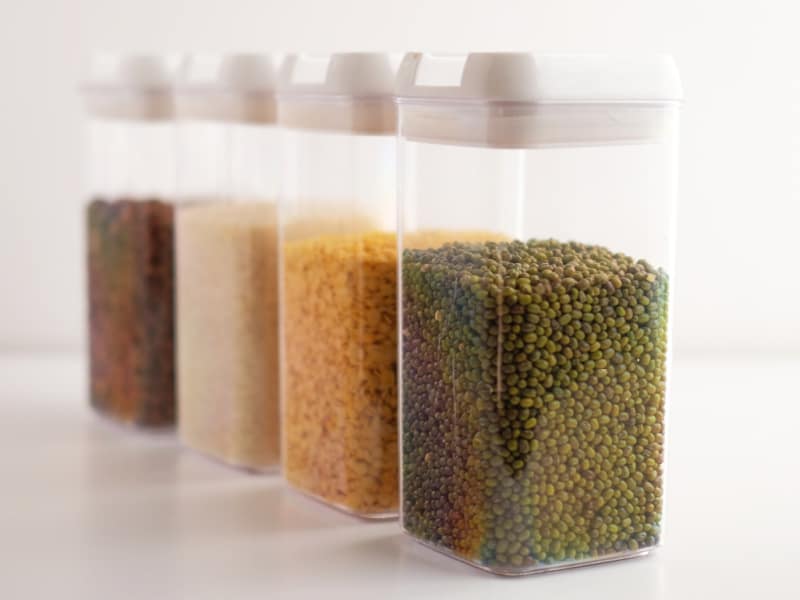
It’s also essential to keep dry goods like flour, sugar, and cereals in airtight containers once opened. This measure keeps them fresh longer and protects against insects and pests. Canned goods should be stored in a cool, dark place and can last for several years unopened. However, check for signs of spoilage, such as rust, bulging, or damage to the can.
Factors Indicating Shelf Life And Quality
Dates on packaging can guide you on a food’s quality. ‘Use by’ dates are the last dates recommended for peak quality, while ‘best if used by’ dates refer to best flavor or quality. It’s important to note that most foods remain safe after these dates.
Also, routinely checking stored food for visible signs of spoilage or degradation, such as mold, pests, or abnormal smells, can prevent accidental consumption of unfit foods. Understanding these cues and regular inventory checks contribute to effective and safe, non-refrigerated food management.
Advantages Of Effective Food Storage
Proper food storage techniques can improve food taste and texture, less wastage, and money surplus. Furthermore, it streamlines your kitchen operations, optimizing the efficiency of your household. Above all, prudent food storage practices are pivotal in ensuring you and your family enjoy healthy and nourishing meals.


Creating Meals With Non-Refrigerated Ingredients
Selecting Food Items That Don’t Require Refrigeration
Choosing meals that center around non-perishable ingredients requires the correct selection of foods. The primary focus should be on canned and dried food items, offering a broad spectrum of choices. Staple canned foods include vegetables, fruits, beans, and fish, all rich in vital nutrients and proteins. Meanwhile, dry food selections such as pasta, rice, and pre-packaged noodles or rice dishes provide the foundation for various meals.
Incorporating Protein
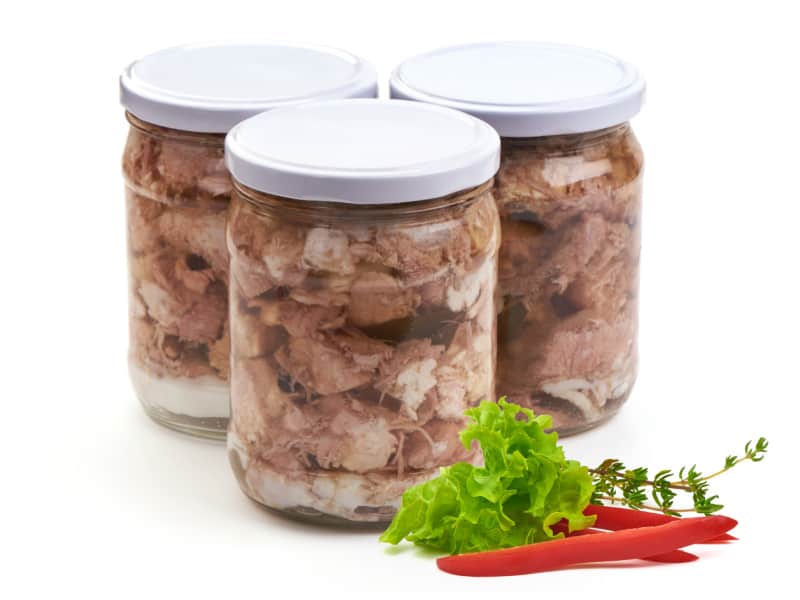
Maintaining protein in your diet when you don’t have the convenience of refrigeration can initially be challenging. Canned meats such as chicken, tuna, or turkey are filled with protein and can be mixed with various ingredients to create balanced meals. Additionally, many kinds of beans, either premade in cans or bulk purchased, can offer plant-based protein options. Nut butters also provide excellent protein and can be utilized creatively in meals.
Adding Fruits And Vegetables
Fruits and vegetables are integral to a balanced diet, and canned versions can offer the same nutrients as their fresh counterparts. Consider keeping a variety of canned fruits and vegetables on hand, including options like green beans, carrots, peaches, and pears. These can be added to meals or eaten as an easy snack. Additionally, dried fruits and vegetables also don’t require refrigeration and can last a long time on the shelf.
Preparing Main Dishes
Many main dishes can be prepared using non-refrigerated ingredients. One popular option is pasta primavera, using your favorite dry pasta and a mix of canned vegetables. Canned chicken can be added for additional protein. Another option is a hearty bean and rice concoction, using canned beans and a rice mix from the dry goods aisle. Canned fish like tuna or salmon can be put to work in a variety of dishes, from salads to pasta.
Creating Sides And Snacks
Non-perishable sides and snacks also offer convenience and versatility. Rice and pasta sides can be prepared with canned broth for added flavor, and a variety of crackers, chips, and popcorn provide easy snack options that don’t require refrigeration. Dried fruits and nuts also make a power-packed snack, providing excellent nutrition while requiring no preservation.
Seasonings and Additives

Remember to keep an array of spices and canned sauces on hand to diversify meals and keep them flavorful. Mustard, soy sauce, and canned soups can act as flavor enhancers, and a variety of spices can dramatically shift the taste profile of a meal. Like the former ingredients, items like honey, granola bars, cereals, potato flakes, and canned coconut milk can diversify your food options.
Incorporating non-refrigerated foods into meals doesn’t have to be a daunting task and can be pretty beneficial. Defining a list of your favorite shelf-stable ingredients can be the first step in incorporating more non-refrigerated foods into your meal planning.
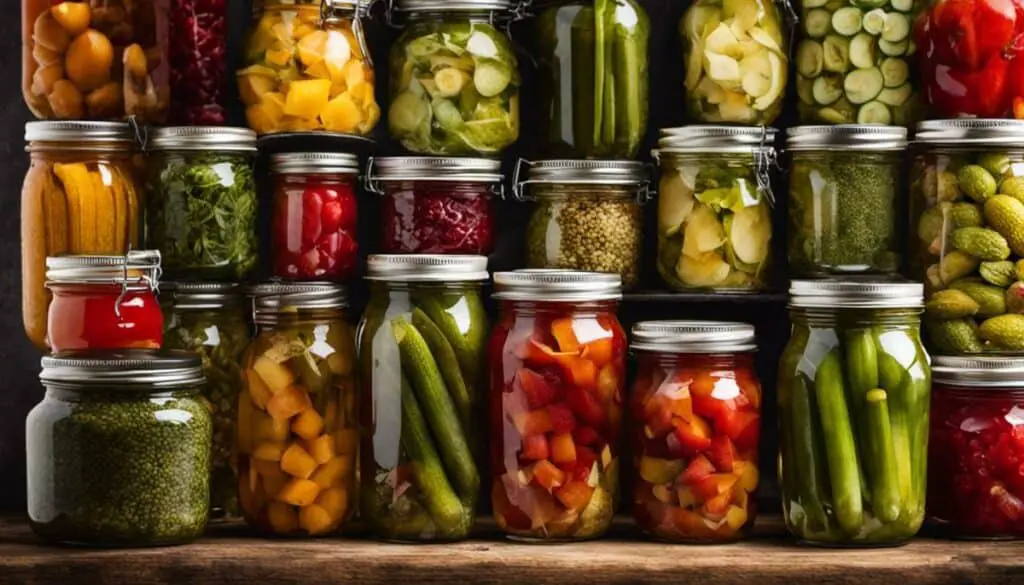
As we’ve seen, the world of non-refrigerated foods is broad and diverse, crossing cultural boundaries and challenging our everyday perceptions. While we’ve covered the what and why of these foods, it’s important to remember that proper storage practices are crucial in maintaining their quality and safety. Organizing your pantry and understanding the different storage needs of each food category can extend shelf life and minimize waste. Moreover, these foods aren’t just survival essentials. With some creativity, they can be transformed into appealing and nutritious meals – a quick, convenient solution for our always-on-the-go lifestyle. By understanding and incorporating these foods into our daily lives, we gain more culinary flexibility and create a path toward being waste-conscious, efficient consumers.
Some other articles you might be interested in DIY Emergency Water Filter and How To Purify Water For Drinking.
I hope this post brought value to your day. Please consider sharing it with a friend or on your favorite social media if it did. Thanks For Reading The Dying Art Of Living!


